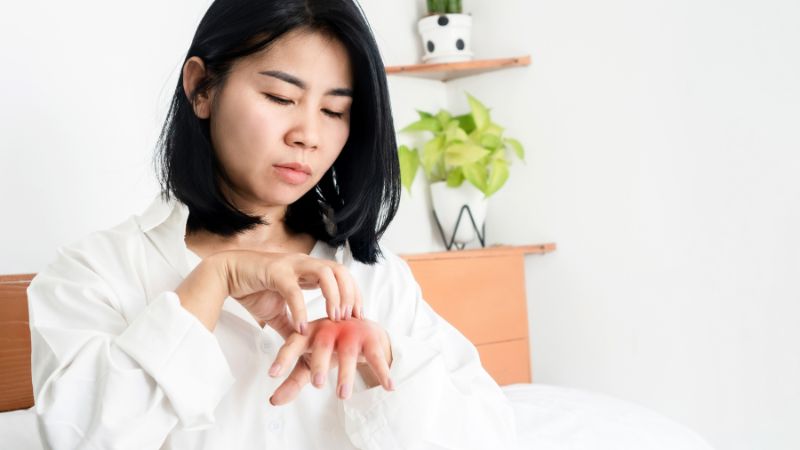Waking up with a mysterious bite on your skin can be an unsettling experience. Often, the first question that comes to mind is: What bit me? Two common culprits are bed bugs and mosquitoes. Understanding the differences between bed bug bites and mosquito bites can help you identify the source and take appropriate measures.
Identifying Bed Bug Bites
Bed bugs are small, nocturnal insects that feed on human blood. Their bites can cause discomfort, itching, and anxiety. Here's how to identify if a bite is from a bed bug:
1. Appearance of Bites
Bed bug bites often appear as small, red, and raised bumps. They're typically in a line or a cluster, as bed bugs tend to bite multiple times in the same area. The bites can be very itchy.
2. Location on the Body
Bed bugs usually bite exposed areas of skin while you're sleeping. Common bite locations include the face, neck, arms, and hands.
3. Timing of Symptoms
The bites often cause immediate discomfort and itching. However, in some cases, the reaction might be delayed, taking a few days to appear.
4. Nocturnal Bites
If you wake up with fresh bites that weren't there the night before, it's a strong indicator of bed bugs, as they are most active at night.
Bed Bug Bites vs. Mosquito Bites
While bed bug bites have their specific characteristics, it's important to distinguish them from mosquito bites. Mosquito bites are usually isolated, not in a line or cluster. They can appear anywhere on the body, not just on exposed skin. Mosquito bites also tend to swell more and are less likely to cause a rash.
Signs of Bed Bug Infestation
Apart from the bites, other signs can indicate a bed bug infestation:
1. Physical Evidence of Bed Bugs
Look for tiny, reddish-brown bugs in your mattress seams, box springs, bed frames, and nearby furniture. Bed bugs are about the size of an apple seed.
2. Blood Stains
You might find small blood stains on your sheets or pillowcases, which occur when bed bugs are crushed.
3. Bed Bug Excrement
Look for dark or rusty spots of bed bug excrement on sheets, mattresses, bedclothes, and walls.
4. Musty Odor
A heavy bed bug infestation can produce a musty, sweet odor, which comes from the bugs' scent glands.
Prevention and Treatment
Preventing bed bug infestations involves regular inspection of sleeping areas and maintaining cleanliness. If you suspect bed bugs, it's often best to contact pest control professionals for treatment. For bites, over-the-counter anti-itch creams and antihistamines can help alleviate symptoms.
Conclusion
Identifying bed bug bites involves looking for clusters or lines of red, itchy bumps, primarily on exposed skin, and considering other signs of bed bug presence. It's important to differentiate these from mosquito bites, which are more random and swollen. If you suspect a bed bug infestation, prompt action is necessary to control and eliminate these pests. Remember, early detection and treatment are key to dealing with bed bugs effectively.


